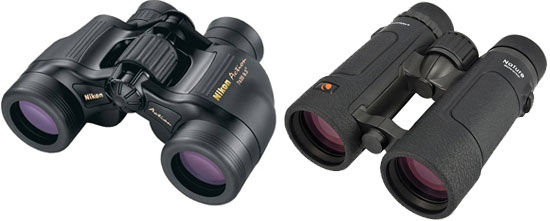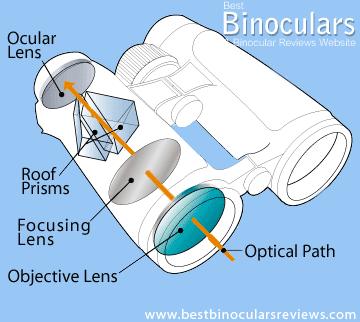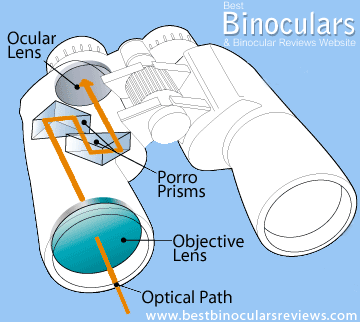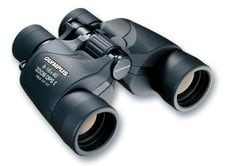Cheap Binoculars – Is a Roof or Porro Prism Best?

I received an excellent question form someone looking to get a pair of low cost or cheap binoculars and they were wondering as to if they should get a pair of porro or roof prisms:
 Question:
Question:
I am now retired and my wife and I travel a bit in our state of Wisconsin, USA mainly observing scenery and wildlife. So, I became interested in binoculars.
Although I own a pair of binoculars ( 45 year old Porro) and have used them occasionally, I am still definitely a beginner. So, based on the advice on your site, I have purchased a “best value” Celestron DX 8x42. They are fully multi-coated, phase coated BaK-4 prisms. You gave them an image Quality of 7. For $140, I think they are great.
However… now my wife wants her own binoculars.
As I read your site and understand more, I see that porro prism binoculars are pretty good in the lower expense category, however my old porro’s are not better than the Celestron DX. I have tried some new porro’s in the store, where it is bright, and can’t tell whether they are better. So, dollar for dollar, would you recommend a new porro in preference to another DX?
PS: We usually use binoculars in good light and not at dawn or dusk.
Answer
Thank you very much for the question, which I will try and answer to the best of my knowledge, but I just want you to keep in mind that as with many things in optics, there is no clear cut right or wrong answer in this situation, it is more about finding the right balance for your particular preferences, uses and budget.
Please note: In the comparisons below, I am making the assumption that the quality of glass used to make the prism are of equal quality.
Roof Prism vs Porro Prism Binoculars
 In recent times the popularity of roof prism (DCF) designed binoculars has exploded to the point that they now vastly outnumber the amount of porro prisms being manufactured and sold.
In recent times the popularity of roof prism (DCF) designed binoculars has exploded to the point that they now vastly outnumber the amount of porro prisms being manufactured and sold.
There are a few reasons for this, but it is mainly due to the way a roof prism still corrects the inverted image as a porro prism does, but the light enters and then passes out of the prism in the same plane (straight through light path) meaning the designers can make a more compact and streamlined shape of binocular.
This resultant external shape of bin is not only functional, but they have become fashionable and are perceived to have a more "modern" look to them and so have become very popular.
However compared to the porro prism, the roof prism does have a couple of drawbacks:
 Non-Total Internal Reflection
Non-Total Internal Reflection
One of the main drawbacks of the roof prism is a surface of the prism does not reflect 100% of the light that hits it, meaning that left untreated less light exits and you get a lower quality, less bright image with the possibility of some vignetting.
This can be partially or almost completely corrected by adding coatings of a highly reflective material to it. However even the cheapest method is technically difficult and reasonably expensive.
The best use dielectric prism coatings that reflect over 99% of the light, but this very expensive and thus only found on very high end binoculars, cheaper than this are silver mirror coatings that can reflect up to 98% of the light. Low cost bins will sometimes use aluminium which costs less, but only has a reflectivity up to 93%.
Porro prism binoculars however do not need these coatings to reflect the same amount of light and so can match the better quality roof prisms at a lower cost. Therefore at the cheaper end of the market they can often outperform a roof prism of the same price because to save money the will use less layers or lower quality mirror coatings.
Phase Shift
As the light reflects around the surfaces of a roof prism, it splits into two slightly out-of-phase beams. Left uncorrected this phase shift you get a lower resolution image with less contrast. To fix this, higher end roof prism bins will add phase correction coatings to the prism surface. This process is relatively expensive and so is often missing from lower end roof prism bins.
Phase shift does not occur within a porro prism and so once again these coatings are not need on this design.
Lower Tolerance To Errors
I have also read to achieve the same quality, a roof prism has to be made to a much higher tolerance and almost any irregularity or change in thickness can result in visible flares in the image produced.
So Which is Better?
To a point, if price is not a major concern then the answer is neither because a well made roof prism, with highly reflective and phase correction coatings will easily perform as well as any very well made porro prism. But they do cost more to achieve the same level.
So it is for this reason that in theory a cheap porro prism should perform better than an equally costing roof prism.
However as manufacturing costs have reduced and techniques for coating the prisms got better, you now can often get what I would call a low cost roof prism binocular that comes with silver mirror coatings and phase correction coatings that to my eyes perform as well as any low cost porro prism. You just have to read through the features and specifications to make sure that they contain these coatings.
Best Cheap Binoculars
Below are the main details and my scores and ratings to some low cost and cheap binoculars that I have reviewed. As you can see whilst the porro prism Pentax 10x30 PCF CW, Celestron LandScout 10x50 and Kowa YF 8x30 cost less than some of the others, they compete very well in most areas, especially in terms of their image quality scores, even when compared to more expensive roof prisms:
So based on the information above, if I was going to spend less than $100 / £100 / €100 and size was not an issue, then as a general rule of thumb, I would opt for a porro prism (with a very few exceptions).
However at $100 / £100 / €100 or above this price range, the choice is not so obvious. For example take a look at the Meade Rainforest Pro 8x42 that is truly excellent for a roof prism bin at their price level.
So at this price level or above, I would first make sure that all the roof prisms on my short list were of good quality, making sure they at least have phase correction coatings applied. Then I would take a much closer look and compare all their main specifications and other features to get exactly the right one for my needs.
You can find more info on how to do this via the links below:
More Information & Related Content
- How to Choose Between Binoculars
- The Different Binocular Configurations & Which to Choose
- Expensive vs Cheap Binoculars
- Low Cost vs Very Cheap Binoculars
- OpticsHunt’s Best Binoculars Under $100 / £100
- Best Binoculars for under $200 / £200
- Best ED Binoculars under $350 / £350
- Top 5 Affordable Binoculars Under $400
 Also Need Advice?
Also Need Advice?
If you want to know more about optics or a particular feature of a binocular. Or if you want some help in choosing the right bin for your needs and I have not already covered the topic, then I would love to hear from you.

 Article | Posted by Best Binocular Reviews
Article | Posted by Best Binocular Reviews 
 Categories:
Categories:  Tags:
Tags: 




So which one is better — Celestron Outland X or Celestron Nature DX? Both are available in 8x42 configuration. However, Outland X is cheaper.
Hi Sanjib,
It is not always simply a case of which one is better. It is more down to which ones particular strengths are more closely aligned to your needs.